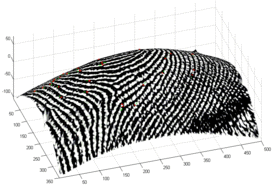A new 3D fingerprint identification system developed
April 19, 2017 | Wednesday | News | By BioSpectrum Bureau
This new practical system is all set for commercialization with several US patents granted on its ground breaking technologies.
A team of researchers at the Hong Kong Polytechnic University (PolyU) has developed a new system for three-dimensional (3D) fingerprinting identification for providing more accuracy during crime investigation, immigration control, security of access and forensic applications.
Law enforcement agencies commonly use automated contact based 2D fingerprinting identification system for identifying people. The major drawback of this system is that contact-based acquisition of biometric scans by rolling or pressing fingers against a hard surface such as glass, silicon or polymer often results in partial or degraded images due to skin deformations, slippages or smearing. Non- contact fingerprint systems reduce these inaccuracies by avoiding direct contact between the imaging sensor and the elastic surface of the skin.
The new identification system developed by Dr. Ajay Kumar's team, at the Department of Computing, overcomes all the limitations imposed by contact-based 2D biometric scans. This system involves the use of a single, low cost digital camera coupled with a few LED light sources controlled by a camera. This allows researchers to efficiently acquire high-frequency information in 3D fingerprints using advanced proprietary 3D fingerprint template generation algorithms to recover 3D minutiae features.
The minutiae features from the fingerprint ridges - such as ridge ending and bifurcation are universally considered to be the most reliable of fingerprint details, ensuring that each fingerprint is unique. About 40-45 minutiae points can be recovered from a fingerprint on an average. The more minutiae points are matched, higher is the confidence and reliability in the matching.
Although many contactless 3D systems have been emerging, they tend to be very expensive and bulky due to their use of multiple cameras or structured lighting systems. This new system offers compact size, high accuracy of around 97%, reduced cost of up to $780, the faster processing time of approximately 2 seconds, and reduced amount of equipment needed.
This new practical system is all set for commercialization with several US patents granted on its ground breaking technologies.










